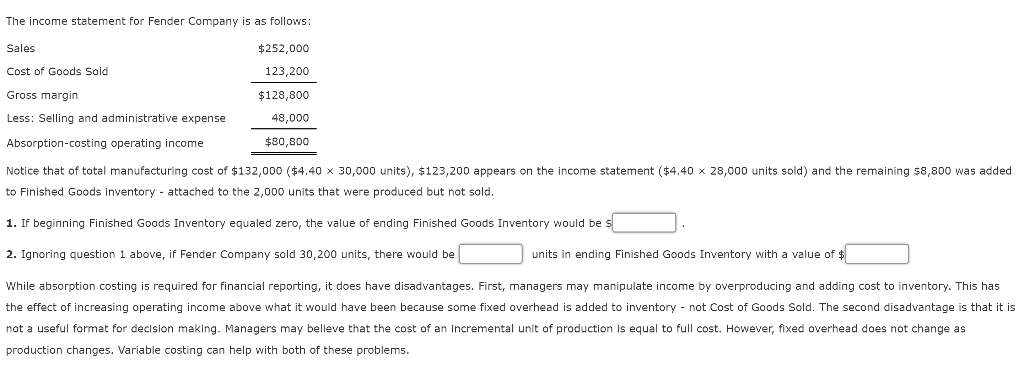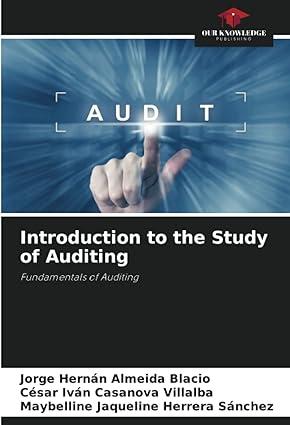

ADDOPPllon Losting Absorption costing, or full costing, is required by GAAP for external financial reporting. Profit is considered a long-run concept and depends on the difference between revenues and expenses. Over the long run, of course, all costs are variable. Therefore, fixed costs are treated as if they were variable by assigning some to each unit of production. Absorption costing assigns all manufacturing costs, direct materials, direct labor, variable overhead, and a share of fixed overhead, to each unit of product. In this way, each unit of product absorbs some of the fixed manufacturing overhead In addition to its variable manufacturing costs. When a unit of product is finished, it takes these costs Into Inventory with it. When it is sold, these manufacturing costs are shown on the income statement as cost of goods sold. It is absorption costing that is used to calculate three measures of profit: gross profit, operating income, and net income. Example: Fender Company showed the following unit costs for its product: Direct materials Direct labor Variable overhead Fixed overhead* $1.20 0.60 0.20 2.40 *Based on capacity of 30,000 units. Last year, Fender made 30,000 units and sold 28,000 units at a price of $9. Selling and administrative expense equaled $ Beginning Finished Goods Inventory contained 450 units with cost of $1,980. Cost of one unit under absorption costing = $1.20 + $0.60 + $0.20 + $2.40 = $4.40 Units in ending Finished Goods Inventory = 450 + 30,000 - 28,000 = 2,450 units Ending Finished Goods Inventory = 2,450 $4.40 = $10,780 The income statement for Fender Company is as follows: Sales $252,000 Cost of Goods Sold 123,200 Gross margin $128,800 48,000 Less: Selling and administrative expense Absorption-costing operating income $80,800 Notice that of total manufacturing cost of $132,000 ($4.40 x 30,000 units), $123,200 appears on the income statement ($4.40 x 28,000 units sold) and the remaining $8,800 was added to Finished Goods inventory - attached to the 2,000 units that were produced but not sold. 1. If beginning Finished Goods Inventory equaled zero, the value of ending Finished Goods Inventory would be s 2. Ignoring question 1 above, if Fender Company sold 30,200 units, there would be units in ending Finished Goods Inventory with a value of $ While absorption costing is required for financial reporting, it does have disadvantages. First, managers may manipulate income by overproducing and adding cost to inventory. This has the effect of increasing operating income above what it would have been because some fixed overhead is added to inventory - not Cost of Goods Sold. The second disadvantage is that it is not a useful format for decision making. Managers may belleve that the cost of an incremental unit of production is equal to full cost. However, fixed overhead does not change as production changes. Variable costing can help with both of these problems








